Table of Contents
Leg pain can result from muscle, bone, or nerve injuries in the legs. Various factors contribute to leg pain and are often associated with different medical conditions.
Leg pain can be mild, moderate, or severe, depending on the cause. Symptoms can be constantly present or only after physical activity.
What helps with leg pain? Plenty of things can relieve the pain. If the pain is mild, home remedies can work. On the other hand, more severe and chronic pain usually manifests due to a medical condition that requires professional treatment.
Ready to get some relief from leg pain? In this article, we’ll discuss different treatment options and home remedies that can help soothe your leg pain.
Types of leg pain
Depending on the cause, there are many different types of leg pain. Doctors usually classify leg pain into neurological, musculoskeletal, and vascular types.
Neurological pain
Problems with the nerves lead to a neurological type of leg pain. This type of leg pain occurs at rest. Typical examples include restless leg syndrome and diabetic neuropathy.
Musculoskeletal pain
Musculoskeletal leg pain arises from problems with muscles or bones and associated structures like tendons. In fact, it occurs after a muscle injury or a bone fracture.
Vascular pain
Vascular pain involves problems with the blood vessels, both arteries and veins. Fat deposits can block arteries, causing leg pain. In veins, blood can backflow, leading to pain and swelling.
What causes leg pain
Injury or damage to the bone, muscles, nerves, or vessels in the legs causes pain. The damage can happen due to any underlying disease or as a result of trauma. For this reason, talking to your healthcare provider about the specific cause of leg pain is important. Besides that, the treatment options usually vary depending on the cause.
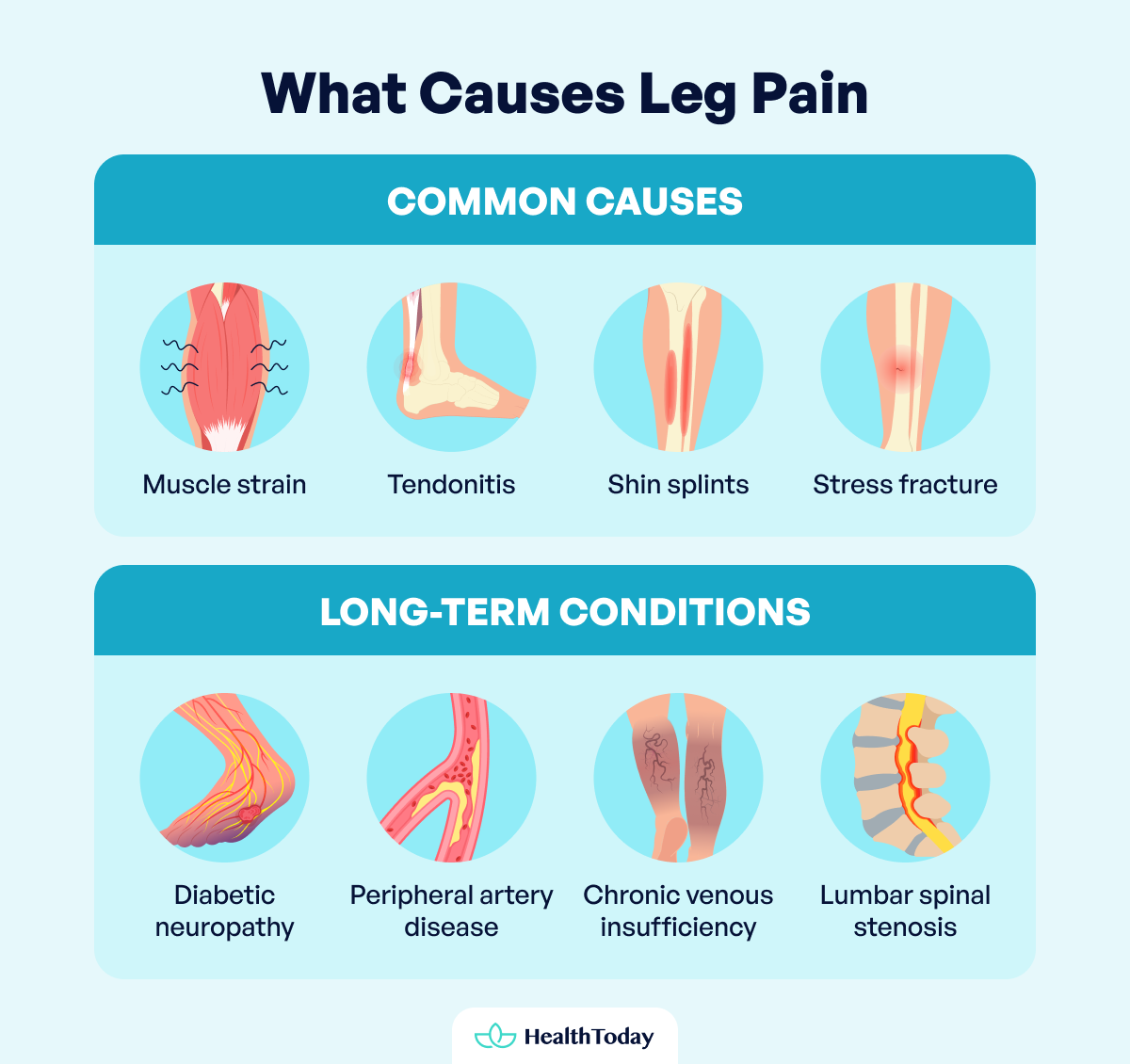
Common causes
- Muscle strain
In a muscle strain, the muscle in the leg is stretched beyond its normal capacity. Besides that, a strain also occurs if the muscle is forced to contract too strongly.
A scenario for muscle strain usually involves periods after strenuous exercise or while you are lifting heavy objects (1).
- Tendonitis
Tendons are strong fibrous bands that connect the muscle to the bone, and leg pain can also be caused by its rupture or inflammation.
Tendons are located in the knee joint and throughout the legs, while the famous Achilles tendon is in the foot. When they become damaged or inflamed, they cause severe leg pain. In such cases, the skin overlying the tendon becomes warm and red (2).
- Shin splints
Shin splints, affecting the inner side of the shin bone, also called the tibia, typically cause pain in runners.
In the early stages, shin splints cause pain at the end of a long run. Over time and without treatment, they cause pain even during the run (3).
- Stress fracture
A stress fracture occurs when there is too much pressure on the bone. There are many ways in which you can get a stress fracture. One cause of a stress fracture is rapidly increasing the intensity of activity (4).
The training conditions, such as running for longer hours or wearing worn-out shoes, can also cause a stress fracture.

Conditions
Long-term conditions associated with leg pain include spinal stenosis, peripheral neuropathy, and vascular disease. You can have two or more conditions occurring simultaneously, which usually worsens the symptoms of leg pain.
- Diabetic neuropathy
People with diabetes may experience pain and loss of sensation in the lower legs. Damaged nerves cause this pain sensation due to increased blood glucose levels.
If you suffer nerve damage, you might not feel pebbles inside your shoe or a blister on your feet. In addition, blood flow to the lower legs is reduced due to damage to the blood vessels (5).
This type of leg pain that occurs in diabetes usually improves with exercise. Moreover, controlling the blood sugar levels helps with the complications (6).
- Peripheral artery disease
The mechanism behind peripheral artery disease (PAD) is identical to that of a stroke or a heart attack. Atherosclerosis is a condition in which fats, called plaques, accumulate inside the artery walls, making the arteries harder. Over time, these fats build up and block the artery.
Sometimes, blood clots form on these plaques, further decreasing the artery’s diameter (6).
The risk factors for developing PAD are similar to those of heart attack and stroke, including conditions like diabetes and high blood pressure.
In PAD, muscle pain usually begins during some sort of physical activity. You may experience pain while walking or climbing stairs. The pain resolves when you rest for a minute or two. In cases of severe PAD, pain may also occur during rest time.
Other symptoms of PAD include leg weakness, numbness, and pins-and-needles sensation. Over time, your toenails and leg hair may stop growing (7).
Your doctor may check the pulses in your leg to determine if there is adequate blood supply.
- Chronic venous insufficiency
Problems with your veins can also cause leg pain. Veins are blood vessels that carry blood back to the heart from your legs and arms. They have valves that help keep the blood moving toward the heart and prevent blood from flowing backward.
Chronic venous insufficiency can occur when these valves become damaged over time, and blood starts flowing backward and pooling in the legs. It often gets worse when you are standing or sitting for long periods. To be precise, this may happen on long flights or during pregnancy, when increased pressure prevents blood flow to the heart.
Individuals with chronic venous insufficiency often complain of heaviness and pain in the legs. As you walk, you might feel sudden tightness in your legs. That’s why your doctor may also look for swollen ankles and feet due to the pooling of the blood (6, 8).
- Lumbar spinal stenosis
Stenosis means narrowing. In this condition, the narrowing occurs in the spinal canal in the lower part of your back, also called the lumbar region.
People with lumbar stenosis have back pain, but the legs are also affected. Pain and numbness are usually felt in the upper legs, mostly in the thigh regions. Some also complain of numbness and weakness in the lower legs (6, 9).
Home remedies and treatments for leg pain
What helps with leg pain? Many treatments and home remedies are available to help ease leg pain. Soreness in the leg can usually be treated at home. Muscle cramps usually go away in a few minutes. For instance, muscle stretching and massaging usually help with mild muscle soreness.
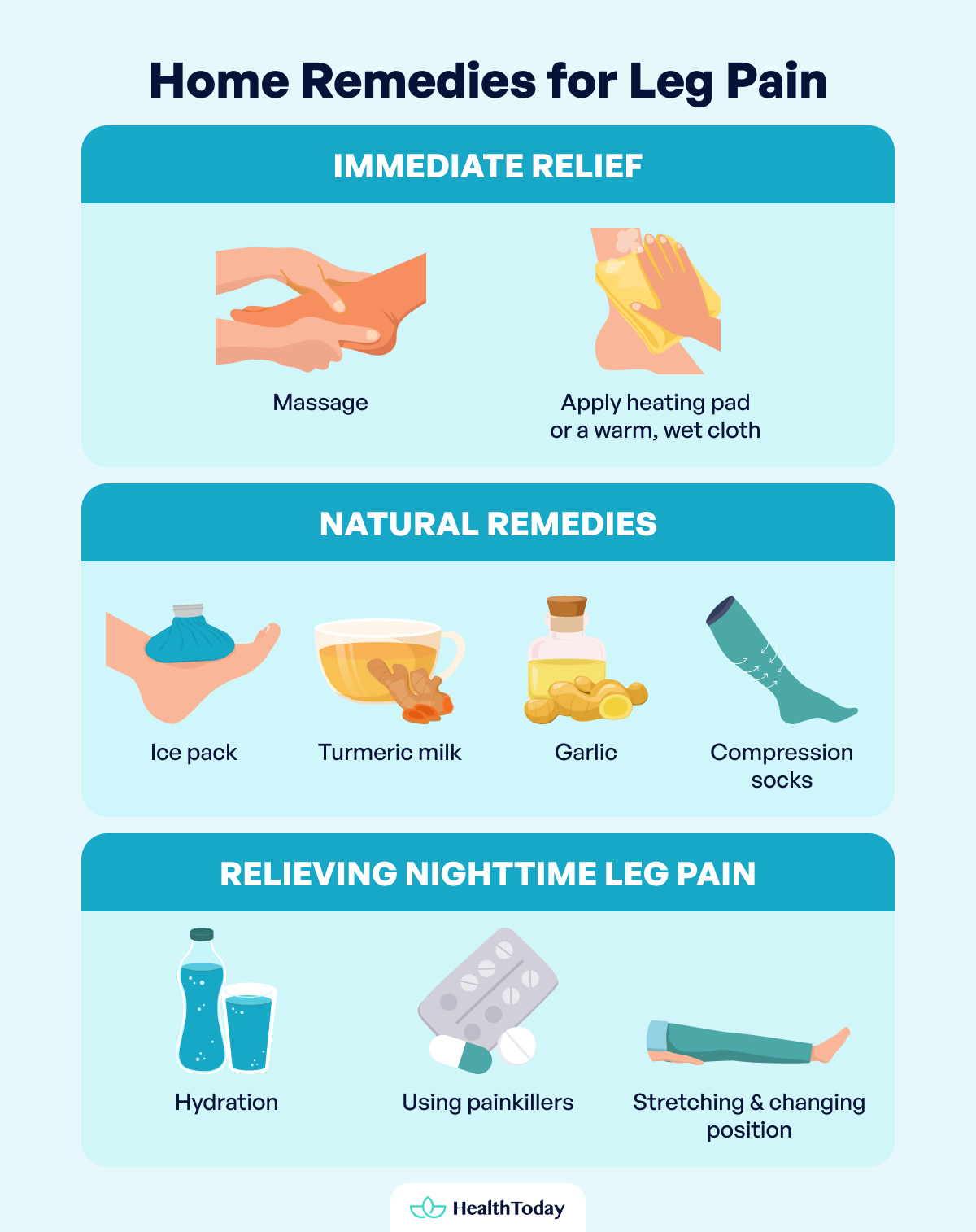

Immediate remedies for leg pain
If you’re having sudden leg pain after a walk or exercise, it’s more likely a muscle cramp. However, a muscle cramp usually resolves in a few minutes.
In case the pain does not go away after rest, massaging can help your muscles relax a bit. You can apply a heating pad or a warm, wet cloth for immediate relief from the leg pain (10).
How to relieve leg pain with home remedies
If your doctor has ruled out serious conditions that might be causing the leg pain, you can try some home remedies.
Ice applied to the muscle helps with the pain. Another home remedy for leg pain is turmeric extract. To be exact, this spice has been used to reduce body inflammation. Many people drink it with milk after injury. Besides that, it’s useful for leg pain caused by arthritis (11).
Compression socks and stockings can help with leg pain caused by problems in the veins.
At times, you can also consume garlic to relieve leg pain. Garlic has anti-inflammatory effects and helps with leg pain caused by inflammation, such as osteoarthritis (12).
How to relieve leg pain at night
Pain in the leg at night usually occurs due to leg cramps. To prevent leg pain from occurring at night, stay hydrated. In addition, you can relieve the pain by using painkillers.
Stretching your legs in bed and changing your position also helps with the pain.
Treatments and medicine for leg pain and swelling
Your doctor may treat leg pain based on its cause. In cases of peripheral artery disease, treatment options include aspirin (13). Aspirin helps make your blood thinner, reducing the likelihood of clot formation in the arteries.
Statins are prescribed in PAD to help lower cholesterol and body fat. As the fat decreases, less gets deposited, blocking the artery.
Lowering blood pressure also helps with PAD. Your doctor may prescribe medications that help lower your blood pressure. However, if all these options fail, surgery might help with the condition (7).
As mentioned above, compression stockings help reduce swelling in venous diseases. Weight loss, when needed, also helps deal with leg pain. Diabetic neuropathy is usually treated by balancing blood glucose levels (8).




Common stretching mistakes
Stretching is a good way to relieve back and neck pain. Regular physical activity and stretching can also improve everyday tasks such as walking, climbing stairs, and overall flexibility in individuals.
- Warming up before stretching helps muscles relax. Your muscles will stretch more easily if you warm up first.
- Taking a warm shower helps relax the muscles before stretching.
- Continuing to stretch while experiencing pain is not recommended. You should stop immediately.
- Pay attention to your posture while stretching, as improper posture can result in injury.
- Making stretching a habit can lead to long-term health benefits and improve your overall quality of life (14).
What to do to prevent leg pain
While there are many causes of leg pain, there are plenty of ways to prevent it. If leg pain occurs due to muscle cramps, staying hydrated would help. Drinking water before and during exercise helps the muscles contract and relax properly.
Warming up before a workout and stretching also help with muscle pain. Before a workout, you can walk slowly or jog a bit to relax the muscles. Stretches after the workout are also helpful in preventing leg pain.
Controlling blood sugar in diabetic neuropathy helps with the pain. In fact, this helps prevent further complications that occur as consequences of diabetes (10).
It’s important to have a healthy body weight to help prevent leg pain due to venous causes. Leg pain can also be prevented by eating healthy food and getting regular physical activity. A healthy lifestyle can also help prevent PAD, heart attack, and stroke (7).




What to do for pain in the legs after sitting all day?
If you have been sitting all day, you can stretch a bit to help with the pain. Wearing supportive footwear also helps. Remember to get up and walk around at least every hour to prevent leg pain.
What gadget can treat leg pain?
Compressive stockings are commonly used for leg pain. These are most useful if vein problems cause pain.
Can we exercise during leg pain?
Exercise depends on the severity and the cause of the leg pain. If there is no severe underlying condition, you can exercise.
How long does a leg cramp last?
Leg cramps usually last about a few seconds to a minute, but the duration can vary depending on the cause of the leg pain. The cramps usually stop within a few minutes. Yet, in some diseases, pain can persist for an extended period. Taking a rest after the cramp helps with the pain.
Summary
Leg pain is a common symptom that most people experience at some point in their lives. While there are multiple causes of leg pain, it’s typically associated with certain medical conditions. Medical conditions that cause leg pain are often serious and require a proper treatment plan.
Your doctor will identify the cause of the leg pain and recommend treatment accordingly. In the case of mild and moderate pain, home remedies and painkillers usually help. Leg pain caused by serious medical conditions like peripheral artery disease requires a different treatment plan. These treatment options are directed not only toward relieving leg pain but also addressing the underlying disease.
It’s important to talk to your healthcare provider. A delay in diagnosis can result in further complications, but prompt diagnosis can improve your quality of life.





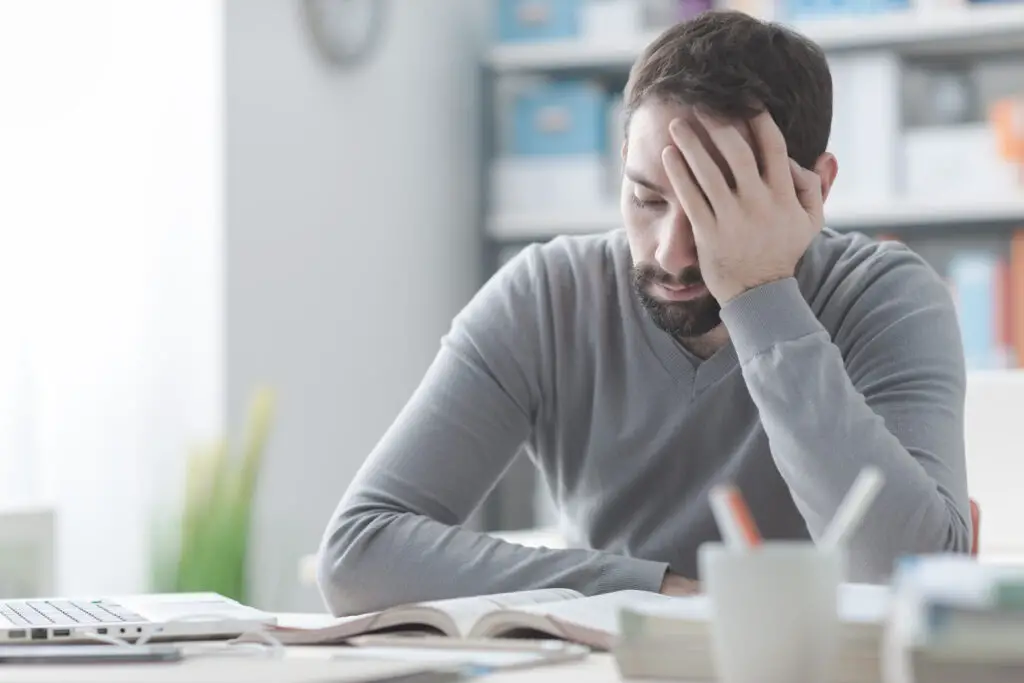



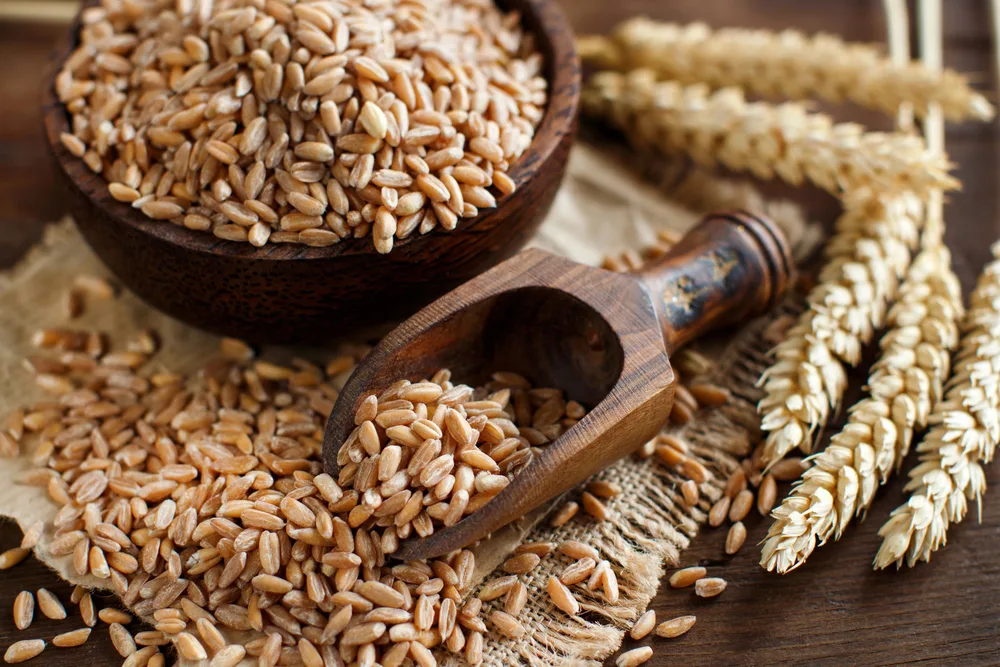




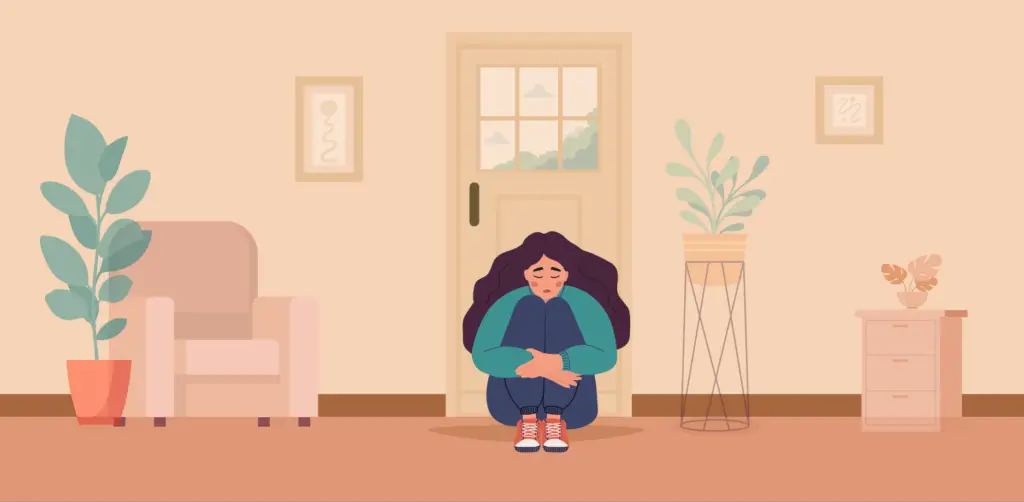
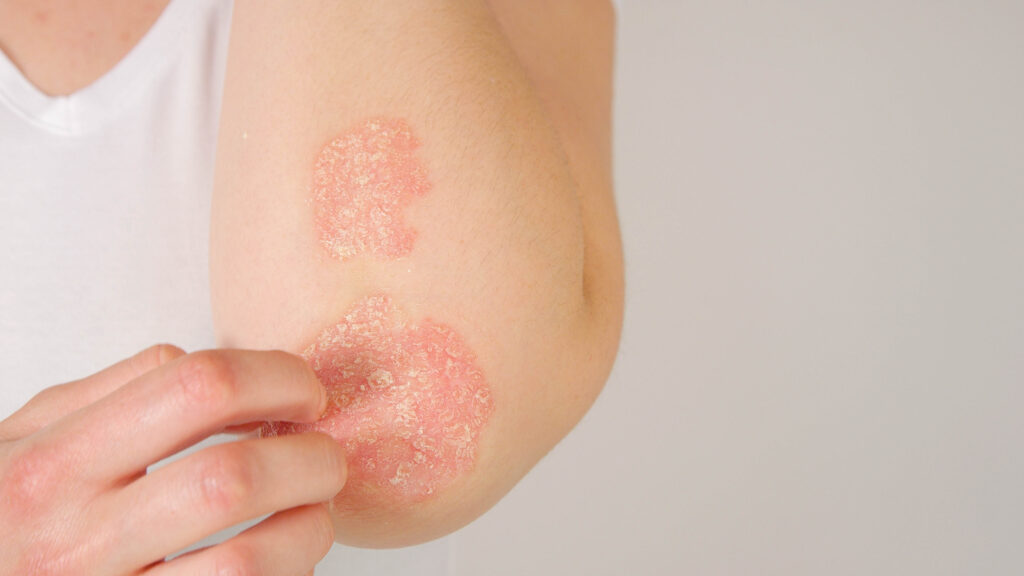

Comments
0